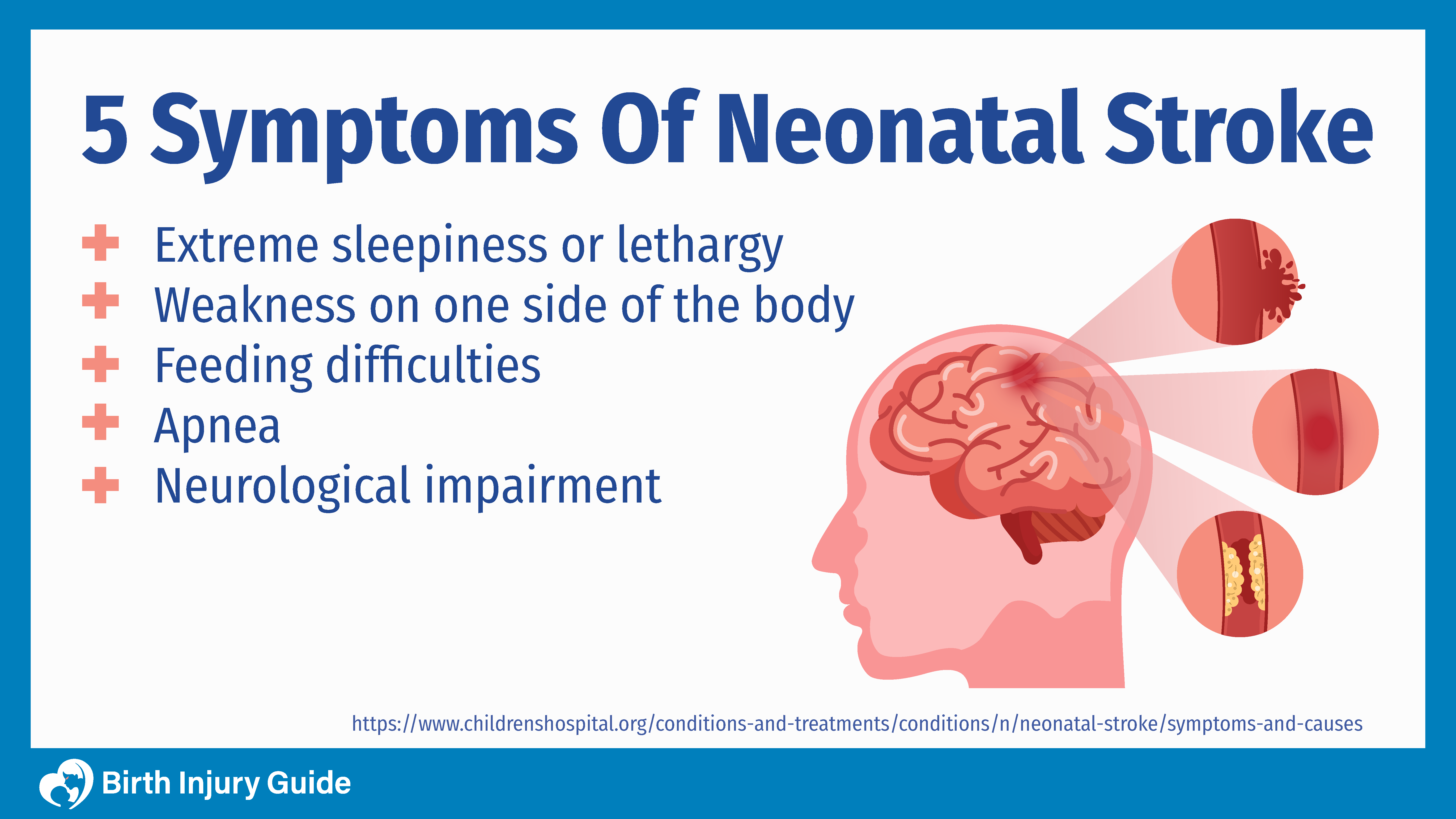
Neonatal Stroke
Although most people associate strokes with older people and something that occurs with age-related diseases, infants are also, unfortunately, at risk. In fact, newborn infants have the same chances of experiencing a stroke as an elder person. Even so, neonatal stroke remains a mystery to many parents.
It’s important to understand not only how common neonatal strokes are, but what the causes are and the signs to look out for.
What is a Neonatal Stroke?
According to the National Institutes of Health (NIH), a neonatal stroke is a medical condition that occurs when an infant’s blood supply is disturbed within the first 28 days of life. If an infant has a stroke within the first seven days of life, it’s known as a perinatal stroke.
Both strokes are described as the brain experiencing both a hypoxic event (oxygen deprivation at birth) and a blockage to the blood vessels. Doctors estimate that about one in every 4,000 babies experiences a neonatal stroke. This estimate may be higher due strokes not being detected because of a lack of symptoms.
What Causes Neonatal Stroke?
One of the causes of neonatal stroke is hypoxia, an event when oxygen deprivation causes the brain to panic. The health of the mother can sometimes affect whether a child will have a neonatal stroke, especially if she has disorders such as:
- Autoimmune disorders
- Coagulation disorders
- Prenatal cocaine exposure
- Maternal infection
- Congenital heart disease
- Diabetes
Factors that can affect a neonatal stroke during pregnancy include placental abruption, placental infection and chorioamnionitis.
Other miscellaneous disorders affecting the mother and/or baby’s health and resulting in a neonatal stroke include blood, homocysteine, and lipid disorders, such as:
- Polycythemia
- Disseminated intravascular coagulopathy
- Prothrombin mutation
- Lipoprotein a deficiency
- Factor VIII deficiency
- Factor V leiden mutation
These are all disorders that make it more likely for blood to clot.
A neonatal stroke can also be caused by maternal infection affecting the central nervous system or other systemic infections. However, the cause of a stroke isn’t always obvious. Some healthy children born after an uncomplicated pregnancy and normal labor and delivery may still experience a stroke.
Symptoms of a Neonatal Stroke
In some instances, there are no outward symptoms of neonatal stroke. Unfortunately, when there are no obvious symptoms, an infant stroke may go undetected for several months. As the child grows older, symptoms such as speech difficulties, imbalance, numbness or weakness on one side of the body may appear. These symptoms are almost impossible to detect in newborn babies.

In other instances, there are clear signs and symptoms that a stroke has occurred, though they may also be difficult to detect. Seizures are the most common symptom, yet when newborns experience seizures, it’s not as easy to detect. Physicians must carefully watch for blank staring, pedaling movements with the legs, apnea, jerking movements and single jerks involving a single limb or the entire body.
Treatment for Neonatal Stroke
One of the newest and most experimental forms of treatment is therapeutic neonatal hypothermia, or cooling therapy. The controlled drop in body temperature keeps the infant’s brain and body from overheating and reacting to an increase in blood flow.
With hypothermia, there is more constriction of blood vessels, and the brain is less likely to react to hyperactive responses that result in brain damage. In fact, doctors have found that stroke patients treated with hypothermia are far more likely to make a rapid recovery.
Another experimental treatment is hyperbaric oxygen therapy. This treatment involves putting a child in an environment of 100 percent oxygen. Pure oxygen floods the body, keeping the brain from overacting to oxygen deprivation, sometimes preventing permanent brain damage. If your doctor prefers to stay away from experimental forms of treatment, there are other anticoagulant treatments, such as heparin and urokinase.
Prognosis for Neonatal Stroke
It is important to get rapid medical attention to your child if he or she experiences a stroke. Of the children that survive a stroke, as many as one million a year of those survivors may develop cerebral palsy.
If you respond quickly and if doctors are willing to try experimental treatments such as hypothermia or Hyperbaric Oxygen Therapy, your child may recover and may not suffer any long term disabilities. Unfortunately, even with proper treatment, the prognosis for neonatal stroke is generally poor.



